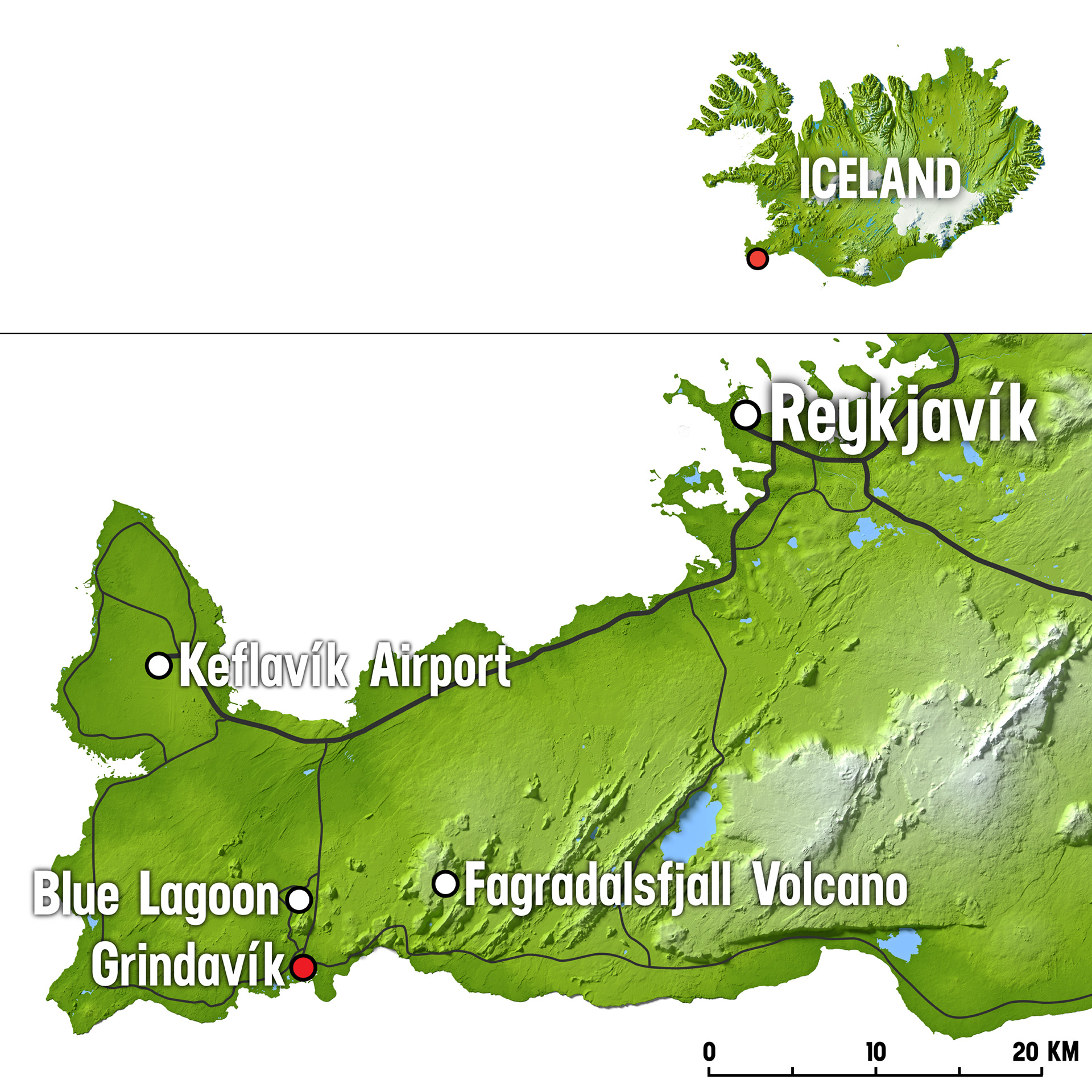Exploring Reykjanes: Navigating Eruptions and Safety Measures
Welcome to Reykjanes, where nature's awe-inspiring forces are on full display. After hundreds of years of dormancy, the region experienced a significant swarm of earthquakes in 2020. This seismic activity was felt across the peninsula and ever since it has been a hotspot for volcanic activity.
Regular eruptions, starting in March 2021 and occurring monthly since December 2023, have become a part of everyday life, prompting residents and industries to adjust to this dynamic environment. Visitors too need to stay abreast of what’s happening. It’s understandable, particularly if you live in a part of the world where there are no active volcanic systems, to be a little unsettled by the news.
Iceland is safe and open for business
Tourists can rest assured that Iceland boasts world-class volcanic scientists and response teams. Precise eruption predictions and a coordinated response system ensure the safety of inhabitants and visitors alike. The seismic activity, primarily concentrated in a specific area, has minimal impact on daily life outside its boundaries.
If you’re planning on coming to Iceland soon, you might wish to get a better understanding of ongoing events. To help you do this, the Icelandic Met Office in collaboration with Visit Iceland and Visit Reykjanes has issued a helpful video. Take a look at this informative Q&A hosted by Dr. Matthew Roberts from the Icelandic Met Office.
The video explains in clear terms why this type of volcanic activity isn’t disruptive to air travel and why the eruptions are nothing to worry about – so you won’t need to postpone or cancel your trip.
Is it still a good idea to visit the Reykjanes peninsula?
If you don’t know the area, it’s understandable to be concerned about safety. However, despite the ongoing volcanic activity, most areas of Reykjanes remain accessible and are still welcoming visitors. That includes Keflavik International Airport, which is located at the north western tip of the Reykjanes peninsula, and also route 41 which is the main road most travellers use when they drive to Reykjavik from the airport.
The volcanic activity that has made the news headlines is mostly confined to the southern part of the peninsula, specifically in and around the town of Grindavík. The town is currently closed to visitors. However, residents are allowed to return during the day and some local businesses continue to operate.
The Svartsengi area, where much of the current activity has taken place, is under special and continued surveillance. There are comprehensive safety and evacuation plans in place for this part of the Reykjanes peninsula. Unlike the eruptions of Fagradalsfjall in 2021 and 2022, it has not been possible to make this area accessible to sightseers for safety reasons. Tourists have been asked to stay away for the time being and must heed this advice.
Can you still visit the Blue Lagoon or the Northern Lights Inn?
So, certain parts of the Reykjanes peninsula are off-limits. Nevertheless, even while Grindavik is out of bounds, high profile visitor attractions such as the Blue Lagoon and the Northern Lights Inn in Svartsengi have not always been affected. When they have been able to open, additional measures have been implemented. This ensures that anyone who is on the premises can feel safe. Also, should it be necessary, people can be evacuated in an orderly and timely fashion.
If you are planning to visit the Blue Lagoon or the Northern Lights Inn during your trip, there’s no need to cancel. Instead, you should keep a close eye on their websites for updates and advisories about the latest situation. If you have a booking and they have to shut temporarily, they will tell you what you need to do.
Evacuation alerts: what you need to know
At this time of increased tectonic and seismic activity on the Reykjanes peninsula, the region is being closely monitored. Scientists are keeping a close check on the data. They remain vigilant to even the smallest of changes to indicators such as topography, gas emissions and temperatures. It’s their job, and they’re good at it.
This data is meticulously recorded and analysed by specialists. Then, they make and publish predictions about the scale and location of potential future eruptions. If it becomes necessary, a comprehensive safety plan is activated. Part of this plan includes sending evacuation alerts via SMS. The message is only intended for those within a specific area, as marked on the map below:

What should you do if you find yourself in the evacuation zone?
If you find yourself in the evacuation zone, this is what you need to do: stay calm, make sure you know your precise location and act promptly. If you are in any doubt, be decisive and take the most cautious form of action. It is better to evacuate when you don’t need to than to find yourself in an area where there is a risk to your safety.
Please note, however, that these SMS alerts are sent based on phone mast coverage. This means you might receive a message even if you are outside the evacuation zone. If you aren’t in that marked area, you don’t need to do anything unless you are instructed otherwise by a person in authority. Always be aware of your surroundings. You can refer to the map we’ve included in this article for clarification on where the boundaries of the evacuation areas are.
There’s no cause for alarm
Remember, Iceland is very good at managing the risk that comes from living close to volcanoes. The authorities constantly monitor any kind of seismic or tectonic activity in order to keep everyone safe. All you need to do is make sure you follow the official advice and get on with enjoying your holiday.

